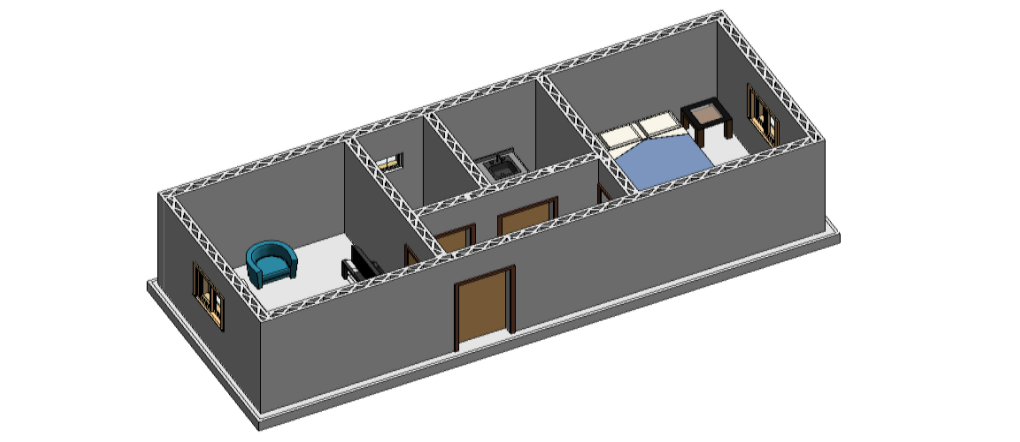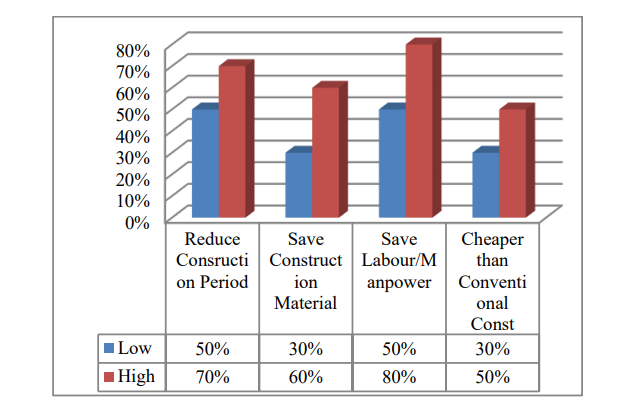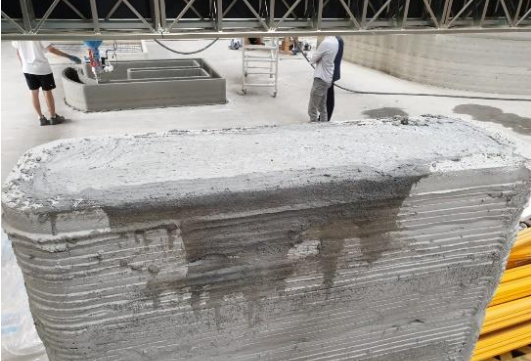In the recently published ‘Evaluating The Visibility of Building Syrian Refugee Shelters by 3D Printing Technology in Jordan,’ authors Mohanad Akeila, Kelvin Kuok King Kuok, and N.H. Matthew Wong are touching on one of the most fascinating topics in 3D printing as it lends itself to humanitarian efforts and shows off nearly all the benefits of 3D printing.
The researchers evaluate whether it is a realistic endeavor to attempt to 3D print Syrian shelters in Jordan, investigating current conditions, and how they could be made exponentially better.
Currently there are Syrian refugees spread out through Jordan in camps. There, many of the basic human needs to live are in short supply such as water and electricity and shelter—and over 6.3 million individuals are currently placed around the world. Displaced is really a better word, leaving millions sleeping in standard tents, while some are lucky enough to enjoy prefabricated shelters.
“The average life span of refugee camp around the world surveyed to be between seven to seventeen years, therefore most of the provided shelter would be changed up to 9 times for a family staying for the period of the camps life,” state the authors.
Even the prefabricated areas are extremely low quality.
Large families may be packed into very close quarters, water intrusion is an issue, and privacy may be completely impossible. Light and ventilation are issues, as well as concerns about flammability while cooking. Zaatari Refugee camp is one area exhibiting such problems. Today, those concerned about design standards are examining the following features:
- Safety and security
- Comfort
- Social context
- Stability
- Durability/Adaptability
- Being demountable
- Modularity and flexibility
- Independent constant energy
Several different design models have been created and digitized using tools like the building information model (BIM)—a drafting and project management software for developing projects in 3D.
“Revit is the main software among BIM family of applications that is used to design, analyze and create the models within a single platform,” explained the researchers. “The design model by Revit contain: all the geometry, geographic locations, special relationships, quantities, and assets for all different components of the design. The software develops the architectural, structural, mechanical, electrical, and plumbing models in a single platform and in a three-dimensional view.”
Technology like 3D printing has made construction around the world—and we have seen this in many areas, from plans to build homes in developing nations to tools and shelters for refugees, and even more luxurious aspirations around the world like the construction of office buildings in Dubai. Here, the authors explore using 3D printing to create refugee shelters via a design collaborative platform. And in using the BIM platform, efficiency in design can be improved substantially.
The researchers examined WinSun comprehensively as they have been behind so much home and office 3D printed construction.
“WinSun proposed four different ways of providing the printer to the sheltering site. The first option is renting the printer at a cost of half million dollars per year in addition to $1.5 M USD for the technology, patents application and $300,000 USD for insurance which is refundable after returning the printer to the manufacturer. The second option is buying the machine that comes with intellectual property, patents, training, technical support at a cost of $3M USD.
“The third option is buying chemicals additives from WinSun for a value of 4MUSD (at a rate of 247USD/ton) to get a free of charge printer along with all supportive equipment’s such as the mixers, silos, pumps, training, and copyright.”
Designed shelters include:
- One kitchen – 1.8x2m
- One bathroom – 2.4m2
- Bedroom – 3×3.2m
- Living room – can be divided each night to make room for children’s sleeping
While the actual cost would be dependent on where the structure is built and how much material is needed, in an average Jordan shelter, 187.5 USD/m3 would be the cost for concrete, for example.
Durability is an extremely important factor, and the authors state that some shelters are only in place for one year.
“Transitional shelter occupants capacity found to be smaller than the 3D printed shelters, which mean additional shelters required to accommodate the 70,000 refugees. A transitional shelter would cost 12,210 USD (=2442×5) over 15 years span, since shelter to be changed every 3 years. A refugee camp made for hoisting 70,000 refugees would require 14,000 T-shelter at a cost of 170.9 M USD whereas 10,000 3D printed shelters at cost of 161 M USD would be enough to shelter same number of refugees. Therefore, the 3D printed shelter will impose a cost efficiency of 6% in comparison to Transitional shelters over 15 years span. The efficiency can be further investigated by reducing the amount of inner wall printable profile without compromising the structural stability.
“The 3D printed shelter achieved cheaper cost than transitional shelter, higher stability ratios, and long durability solution, as well as it achieved the social and cultural context of the Syrian refugees,” concluded the researchers.
What do you think of this news? Let us know your thoughts! Join the discussion of this and other 3D printing topics at 3DPrintBoard.com.
[Source / Images: ‘Evaluating The Visibility of Building Syrian Refugee Shelters by 3D Printing Technology in Jordan’]Subscribe to Our Email Newsletter
Stay up-to-date on all the latest news from the 3D printing industry and receive information and offers from third party vendors.
You May Also Like
Gorilla Sports GE’s First 3D Printed Titanium Cast
How do you help a gorilla with a broken arm? Sounds like the start of a bad joke a zookeeper might tell, but it’s an actual dilemma recently faced by...
Nylon 3D Printed Parts Made More Functional with Coatings & Colors
Parts 3D printed from polyamide (PA, Nylon) 12 using powder bed fusion (PBF) are a mainstay in the additive manufacturing (AM) industry. While post-finishing processes have improved the porosity of...
$25M to Back Sintavia’s Largest Expansion of Metal 3D Printing Capacity Since 2019
Sintavia, the digital manufacturing company specializing in mission-critical parts for strategic sectors, announced a $25 million investment to increase its production capacity, the largest expansion to its operations since 2019....
Velo3D Initiates Public Offering in a Bid to Strengthen Financial Foundations and Drive Future Growth
Velo3D (NYSE: VLD) has been among a number of publicly traded 3D printing firms that have attempted to weather the current macroeconomic climate. After posting a challenging financial report for 2023,...





































